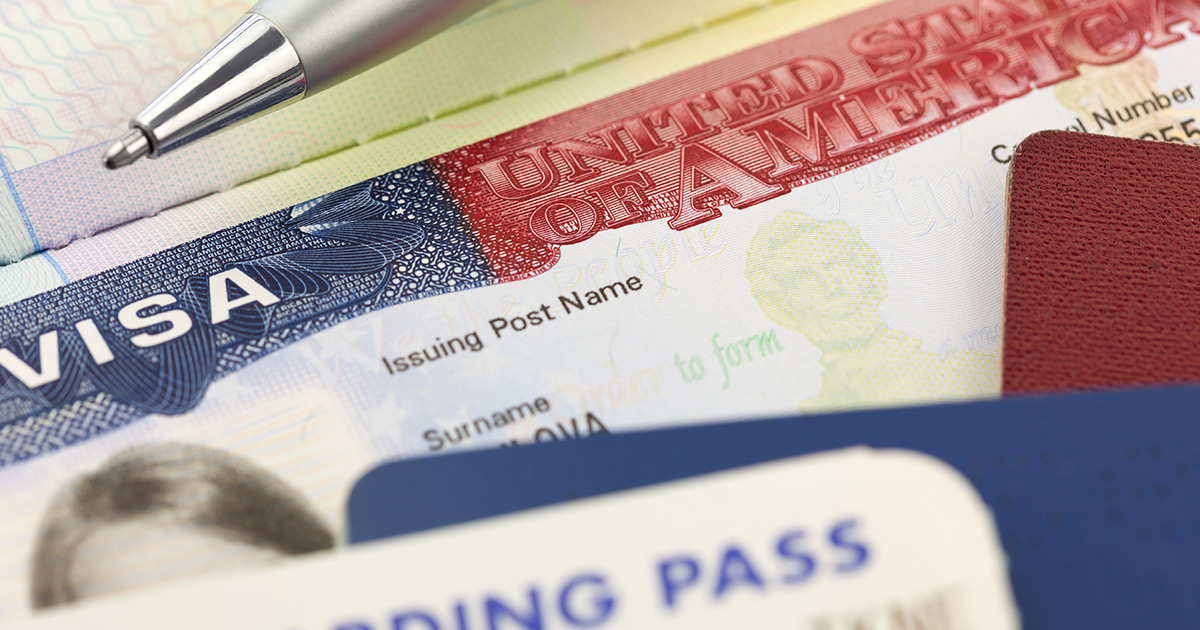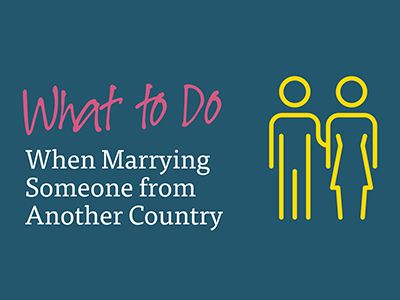Immigrating to the United States can be an overwhelming process. Some of the government websites are hard to understand. It can be unclear what documents you actually need and what the process will be like. Here is an overview of the main things to know if you want to immigrate to the U.S.
What are the different types of immigration allowed by the U.S. government?
Family-based immigration
This process involves a family member who is a U.S. citizen submitting an immigration petition (request) for their foreign relative. The immigrant must be:
- The spouse of a U.S. citizen. (this also applies to married same-sex couples)
- Unmarried minor (younger than 21 years old) children of U.S. citizens.
- Parents of a U.S. citizen who is at least 21 years old.
These fall under the “immediate relative” category of family immigration. There are also a limited number of visas every year for immigrants who fall into the following “family preference category”:
- Adult children (married and unmarried) of U.S. citizens.
- Brothers and sisters of a U.S. citizen who is at least 21 years old.
- Spouses and unmarried children of lawful permanent residents (LPRs). LPRs are non-American citizens who the government has given a “green card" to (which signifies permanent residence in the U.S.) and who are allowed to be here permanently.
With family-based immigration, both you and the U.S. citizen/LPR sponsor must meet the appropriate age and income requirements. The sponsor has to prove that he or she makes enough money to support you (since sponsors must sign a document accepting legal responsibility for your finances).
The government will also need proof that the family relationship is real. Proof will vary based on who is sponsoring you but could include legal documents like marriage and birth certificates, old family photos, cards and letters, phone records, etc. — anything to show the relationship has existed since before you started the application process.
Employment-based immigration
If you have a job lined up in the United States, you’re most likely eligible for a work visa. It can be a temporary worker visa or a permanent visa (green card), based on whether the employment is for a fixed period of time or whether it’s a long-term, permanent position.
A temporary worker visa requires the employer to submit an application and other proof of employment before you’re allowed to enter the United States. Depending on the job, the employer may also have to complete a labor certification form. There are various categories of temporary worker visas, based on skills and educational degrees, that are detailed by the State Department here.
A permanent worker visa is divided into five categories based on the type of employment. Depending on the category, you may have to have proof of employment and your employer may have to submit a labor certification. The five categories of permanent worker visas are:
- EB-1: Priority Workers — The highest level with the fastest certification process, this category is for people with “extraordinary ability” in the sciences, arts, education, business or athletics (no employer sponsorship is required) outstanding professors or researchers (sponsorship by an American university or private research facility required) and multinational executives and managers (employer sponsorship required).
- EB-2: Professionals with Advanced Degrees — This group includes people whose professions need advanced degrees (like physicians, scientists and attorneys) and people of “exceptional ability” in the arts, sciences or business. If you’re in this category, labor certification is required.
- EB-3: Skilled, Professional and Other Workers — The U.S. government defines “skilled workers” as a job that requires at least two years of training or work experience (that isn’t seasonal/temporary). Professionals are those with a bachelor’s degree (or foreign equivalent). If you’re in this category, you’ll need to have a full-time job already lined up and labor certification.
- EB-4: Special Immigrants — You may qualify for this category if you’re a religious worker, government employee, translator or broadcaster.
- EB-5: Investors — This category has very specific restrictions – you must invest $1 million ($500,000 if the investment is in a targeted area) in a new commercial enterprise that employs at least 10 full-time U.S. workers.
Coming to the United States as a Refugee
A refugee, as defined by U.S. law, is someone who can show they have been/are being persecuted or fear persecution in their home country because of race, religion, nationality, political opinion or membership in a social group. The refugee application process involves referrals from the U.S. Refugee Admissions Program. Learn more here.
Is there a difference between a green card and a visa?
The language used around immigration documents can be confusing. When most people use the word “visa” they are referring to a temporary, nonimmigrant visa. This allows people to enter the United States for a set amount of time. Generally to get a nonimmigrant visa you have to prove that you have plans to return to your home country after your temporary work, study or travel is done (to avoid the problem of people entering the United States on a temporary visa and then staying once the visa expires).
An immigrant visa is for those who want to live permanently in the United States. Once you have an immigrant visa, you can get a permanent resident card, which is more commonly known as a green card. The following groups of people can apply for an immigrant visa and green card at the same time (known as “concurrent filing”):
- People with immediate relatives who are U.S. citizens living in the United States.
- Most people applying for employment-based immigration.
- Special immigrant (category EB-4 detailed above) juveniles.
- An abused spouse or child if the abuser is a U.S. citizen.
There are two types of green cards:
- A conditional resident card (conditional green card) lasts for two years and is for foreign investors or spouses of an American citizen who got married less than two years before you received permanent resident status or came to the U.S. on your immigrant visa. You can’t renew a conditional green card — you have to prove, within 90 days of the card expiring, that you have met the conditions necessary to get a permanent resident card. If you don’t prove this before the card expires, you will no longer have lawful resident status in the United States.
- A permanent resident card (permanent green card) lasts for 10 years. You’ll need to get a new card every 10 years and can submit the paperwork as early as six months before your green card expires. If you let your card expire, your status doesn’t change (so you’re still a permanent resident and won’t be sent home!) but you are breaking the law, because permanent residents are required to carry a valid green card at all times.
What is the process for immigrating to the United States?
Once you’ve determined what type of immigrant visa you’ll be applying for, you’re probably wondering what you need to do next. Here’s a step-by-step look at what it takes to get an immigrant visa.
- The sponsor (family member who’s a U.S. citizen/permanent resident or prospective employer) files an immigrant visa petition with U.S. Citizenship and Immigration Services.
- If the petition is approved, it’s passed to the National Visa Center (NVC) for pre-processing. The NVC will contact you.
- Next you need to choose an agent, the person who will receive all communication from NVC about your case. You can choose yourself, your sponsor, an attorney or a friend or family member you trust.
- You’ll have to pay your immigrant visa application processing fee and affidavit of support fee. Note that to do this you’ll need a U.S. bank account.
- Complete and submit your visa application form.
- Have sponsor complete affidavit of support and gather evidence of their income (tax returns) and proof of their citizenship and your relationship.
- Collect all documents you’ll need to support your application — you’ll submit photocopies to the NVC but will also need the originals for your interview. The specific documents you’ll need will vary by your country of origin but generally include birth and marriage certificates, court and prison records, military records, divorce decrees and passports.
- Submit everything from steps 6 and 7 to the NVC (you have to submit it all together or your application could be delayed).
- NVC reviews your application and all other supporting documents. If everything is completed, they will schedule an interview for you with the right U.S. Embassy or Consulate. You’ll get a letter informing you of the interview details.
- Before the interview, you’ll need to schedule a medical examination with an embassy-approved doctor. Each embassy or consulate also has additional requirements that you’ll want to review before you go. Watch the State Department’s video on preparing for your interview.
- Attend the interview and bring your interview appointment letter, passport, photographs, medical exam results and all your original and supporting documents required when you submitted your application.
- You will be told whether your visa is approved or denied at the end of your interview.
How long does the immigration process take?
As you can see, there are many steps involved in the immigrant visa application process — and lots of paperwork. The government doesn’t like to give estimates for how long the process will take because there are so many variables — the type of visa you’re applying for, how accurate and complete your paperwork is, etc.
If you have an immediate family member who is a U.S. citizen or permanent resident, the process could be as “short” as one year if everything goes smoothly. For other family members, you may have to wait years before your petition is even considered because of the limited number of visas available. The process is similarly varied for employer-based immigrant visas, because each step of the process could take anywhere from a few months to a few years.
What if I want to become a U.S. citizen? How does the naturalization process work?
Naturalization is when a permanent resident becomes a full American citizen. To become a citizen you need to meet several requirements. Specific situations (like getting your green card through marriage) may have different requirements, but the basic requirements you must meet are:
- Be at least 18 years old.
- Have had a permanent resident card (green card) for at least five years.
- Prove you have lived at least three months in the state or district where you’re applying for citizenship.
- Prove you’ve maintained a residence in the United States for at least five years prior to applying for citizenship.
- Prove you’ve been physically in the United States for at least 30 months of the last five years.
- Read, write and speak basic English.
- Have a basic understanding of U.S. history and government (civics).
- Be a person of good moral character who demonstrates an “attachment to the principles and ideals of the U.S. Constitution.”
If you meet all these requirements, then you can fill out and submit an application for naturalization. Then you’ll have a biometrics screening scheduled (to get your fingerprints) and an interview, which includes an English test (reading, writing and speaking) and a civics (U.S. history and government) test, where you will be asked up to 10 questions out of a possible 100.
If you pass the tests and the interview and your application is approved, you then take an oath of allegiance to the United States and become a U.S. citizen! For more information about the process, consider attending one of the U.S. Citizenship and Immigration Services free informational sessions in your area.



